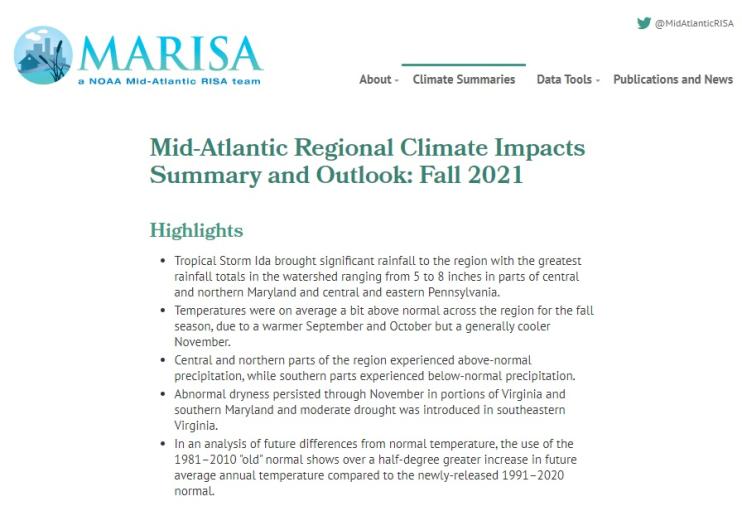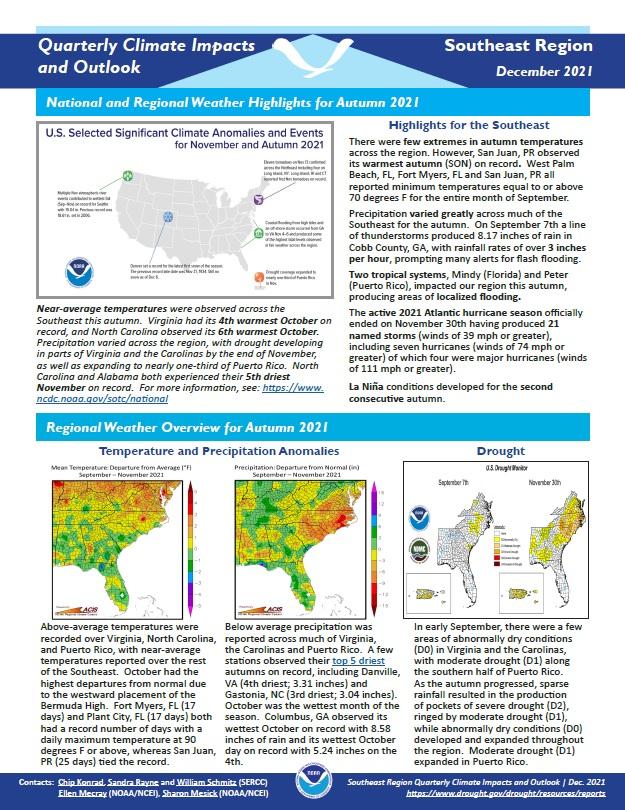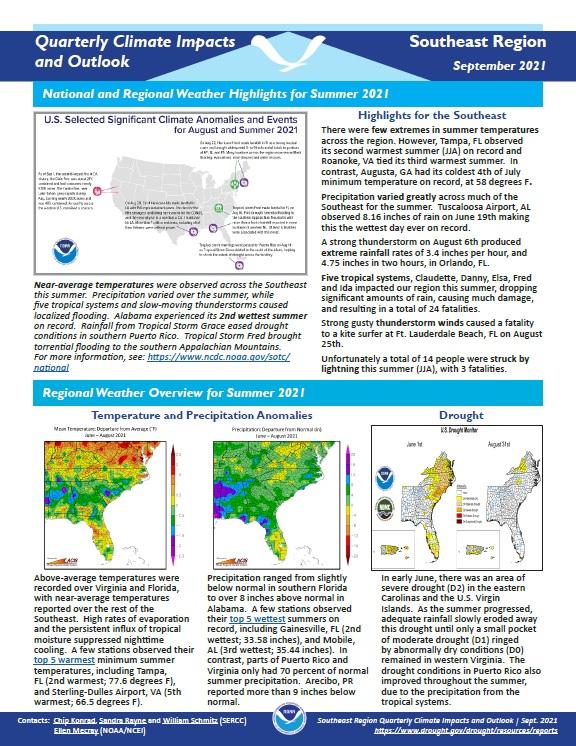For the latest forecasts and critical weather information, visit weather.gov.
The National Weather Service developed 2022 Spring Hazard Outlooks in coordination with NOAA's National Centers for Environmental Information (NCEI) and National Integrated Drought Information System (NIDIS); High Plains Regional Climate Center; Midwestern Regional Climate Center; U.S. Department of Agriculture; and National Interagency Fire Centers' Geographic Area Coordination Centers. This outlook highlights the various spring hazards that could occur and potential impacts across the Ohio River Valley.
Quarterly Climate Impacts and Outlook for the Mid-Atlantic Region for September - November 2021. Dated December 2021.
Temperatures were on average a bit above normal across the region for the fall season. Central and northern parts of the region experienced above-normal precipitation, while southern parts experienced below-normal precipitation.
Quarterly Climate Impacts and Outlook for the Southeast Region for September - November 2021. Dated December 2021.
Above-average temperatures were recorded over Virginia, North Carolina, and Puerto Rico, with near-average temperatures reported over the rest of the Southeast. Precipitation varied greatly across much of the Southeast for the autumn.
Quarterly Climate Impacts and Outlook for the Mid-Atlantic Region for June - August 2021. Dated September 2021.
The majority of the Mid-Atlantic experienced temperatures 1-2 degrees Fahrenheit (F) above normal and some sites had among one of their warmest summers on record. The Mid-Atlantic saw generally above normal precipitation, notably in southern New York and northern Pennsylvania, while some areas in Maryland, Virginia, and the panhandle of West Virginia experienced below normal precipitation.
Quarterly Climate Impacts and Outlook for the Southeast Region for June - August 2021. Dated September 2021.
There were few extremes in summer temperatures across the region. Precipitation varied greatly across much of the Southeast for the summer.
NOAA’s Regional Climate Services Program created these Climate Outlooks to inform the public about recent climate impacts within their respective regions. Each regional report contains easy-to-understand language, and anyone can access them through the Drought Portal.








